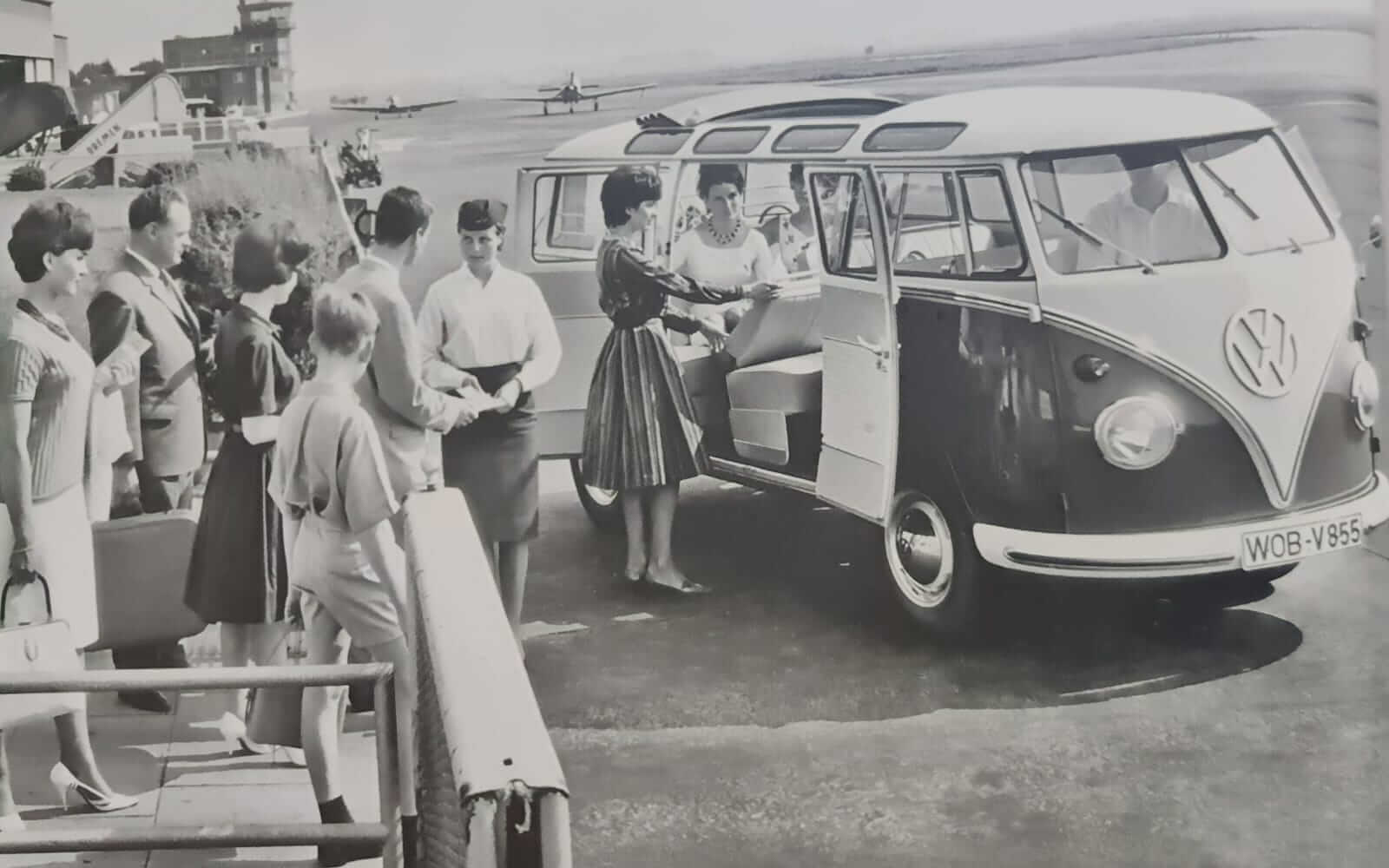While the Beetle was blossoming, Nordhoff’s plans to grow the Transporter range continued apace. The microbus De Luxe (also known as the Samba) was introduced in June 1951, and while relatively expensive and not a volume seller (296 that year), it became an iconic vehicle for van fans. The instant identifier was a plethora of windows. Starting with unique roof panel, the center was occupied by an almost full-length canvas folding roof and, before the roof met the rain guttering, a row of four rectangular Plexiglas skylights on each side allowed passengers to stargaze. Below, there were two extra rear corner windows. If you counted the windscreen as two separate panes, it was remarkable twenty-three-window car. The driver was given a full-width dashboard with cock and space for a radio.
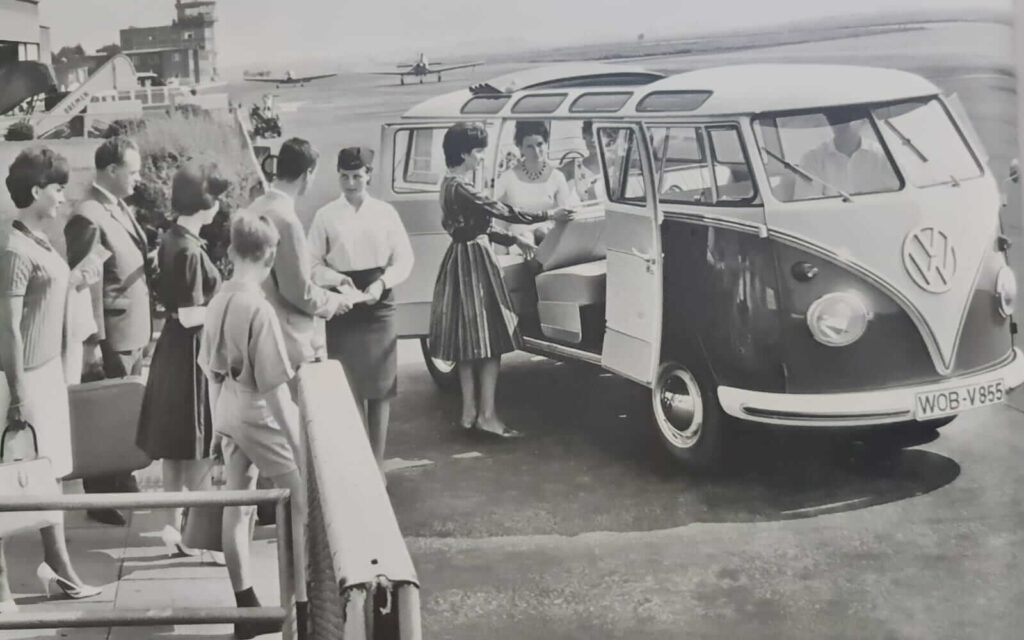
The Microbus De Luxe featured eight skylights, a sunroof, and extra cover windows. It was aimed at hotels and airports, picture here at Bremen in the early 1960s.
An ambulance version of the Transporter arrived at the end of 1951, and in August 1952, the pickup followed. The cab was cut short behind the front seats and given a new roof and paneling of the rear, where a flat load deck ran to the end of the vehicle, over the engine. To achieve this, the engine compartment was reduced in height and the fuel tank moved further forward. The lower floor between the front of the engine by drop-down covers. A double cab was filled by luggage/tool lockers accessed the base for optional packs for dealers and coachbuilders to create a Volkswagen commercial vehicle for every conceivable use.
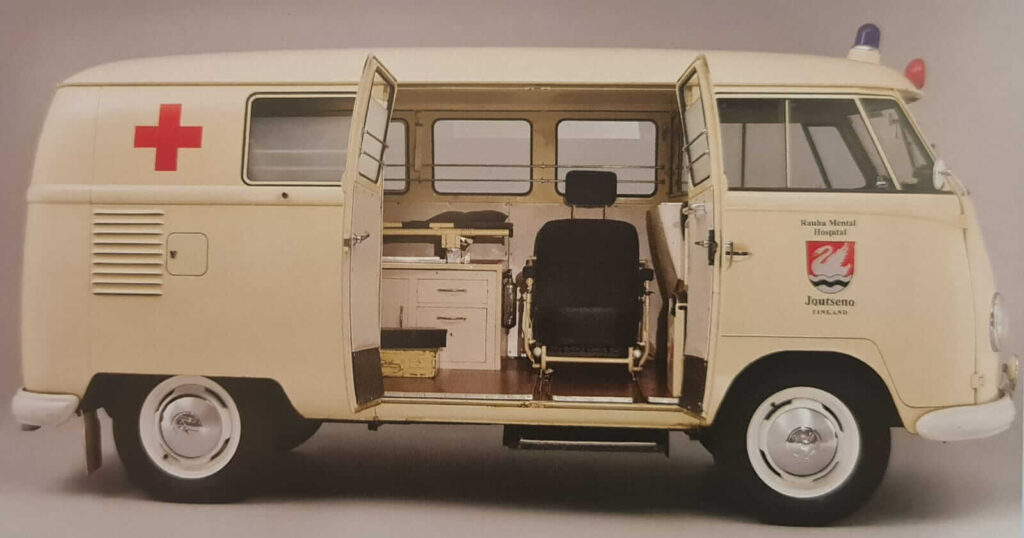
The ambulance conversion to the Kombi came with all the necessary seats and stretchers. A trailer was an extra option.
The factory was a fully engaged churning out standard vans, buses, and pickups to cater for sidelines, but beginning in 1951, it offered a range of packs and optional extras. You could create a mobile crane, butcher shop, mobile photo-processing shop, milk float, fire truck, cattle truck-the list grew and grew. Between 1950 and 1955, ninety different body combinations became available and fifty types of delivery van. Also in 1951, the Westfalia coachbuilding company, south of Hannover in mud-Germany, developed a detachable “Camping Box” for a Kombi customer, this beginning the very long life of the Volkswagen Camper Van.
Introduced in the United Kingdom in 1954 after official Volkswagen imports had started the previous years, the Transporter impressed as much as the Beetle. “In its entirety, the 15-cwt.
Van is remarkable both in construction and performance,” wrote Laurence J. Cotton of Commercial Motor, who on collection from V.W, Motors in London bowled off loaded with fifteen-hundredweight of ballast to the nearest steep hill, where he found that it was “well equipped, in its lowest ratio, to soar over the 1-in-4¼ gradient of succumbs Hill with power spare,” and that “considering the 8-ft wheelbase is about the same as many local-delivery electric vehicles, the suspension of the Volkswagen is extraordinarily good.”
fifteen-hundredweight of ballast to the nearest steep hill, where he found that it was “well equipped, in its lowest ratio, to soar over the 1-in-4¼ gradient of succumbs Hill with power spare,” and that “considering the 8-ft wheelbase is about the same as many local-delivery electric vehicles, the suspension of the Volkswagen is extraordinarily good.”

The Type 2 pickup needed on extensive rework to lower the height of the engine bay for a fully flat cargo deck. Three drop-down flaps made for easy loading.
It wasn’t any more luxurious than 1950 original, though. The Transporter dashboard offered a speedometer-odometer as the sole instrument, with the headlamp beam, traffic indicators, dynamo charging, and oil pressure indicated by lights on the fascia panel. Like the Beetle, no fuel gauge was provided, but the tank had a three-way tap affording a one-gallon (4L) reserve after the main supple was used. “The cab furnishing is severe, a compressed paper-board lining being used to window level”, Cotton wrote, adding that “although austere, the instrument-panel equipment is adequate for a Van.” You did, however, get a heating system free of charge.
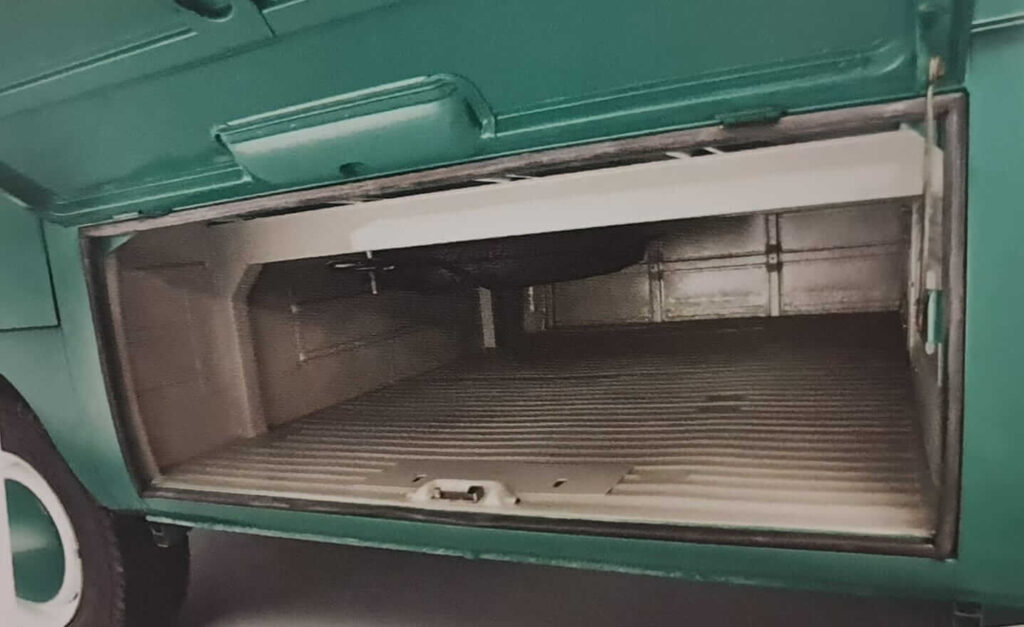
The lower space created in the pickup by running the load deck level to the top of the engine bay was used for a tool locker and spare wheel storage.
Nonetheless, Volkswagens in Britain were a largely a private buyer’s car and van. British fleet owners “shied away” from Volkswagen, as Walter Nelson wrote. One company stated that it felt it had to have British vehicles to sell British products. Nelson quoted an unnamed British motor industry executive: “Frankly, that Volkswagen Commercial is simply too fancy for the British market. British commercial vehicles in the same class have no side-seat, no heater, no defroster.”
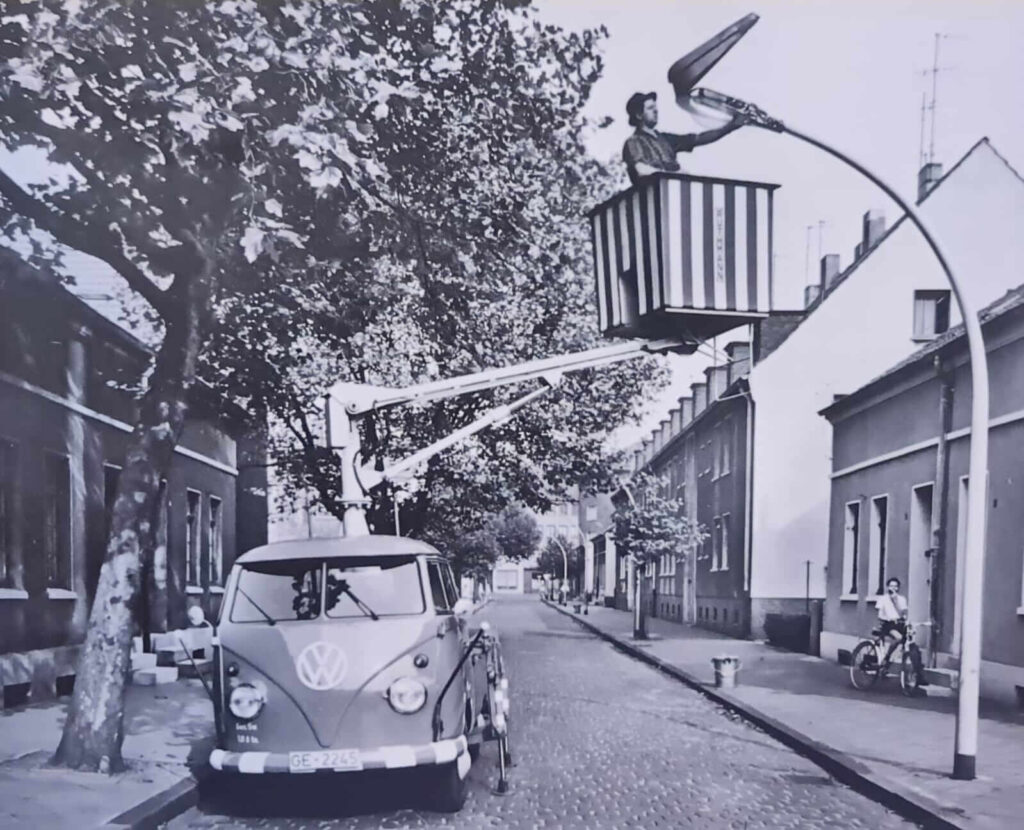
There was a Transporter designed for almost every purpose. The hydraulic lift platform pickup came with built-in stabilizing posts.

